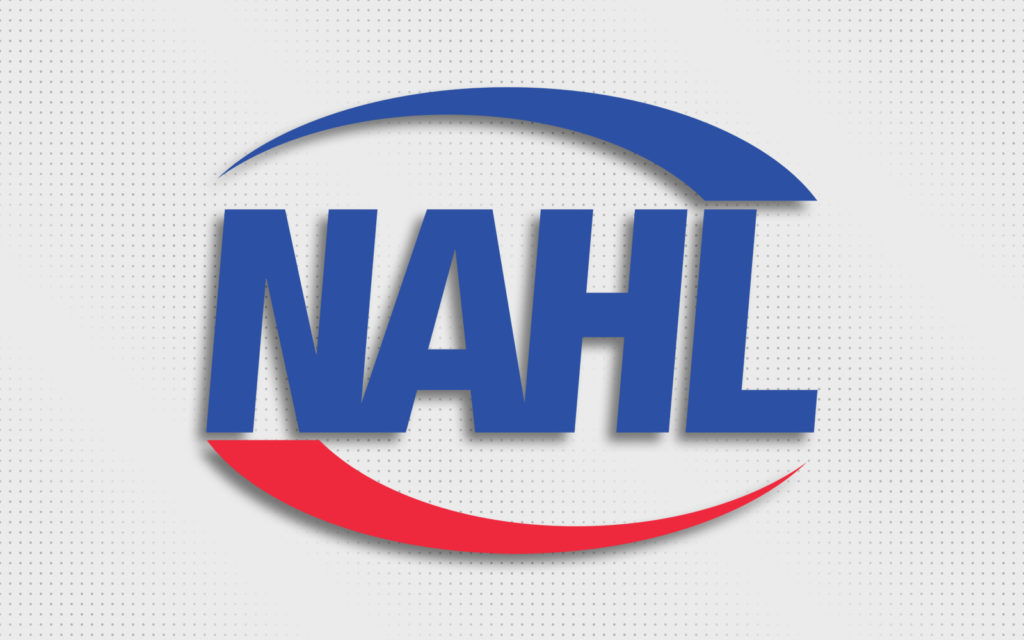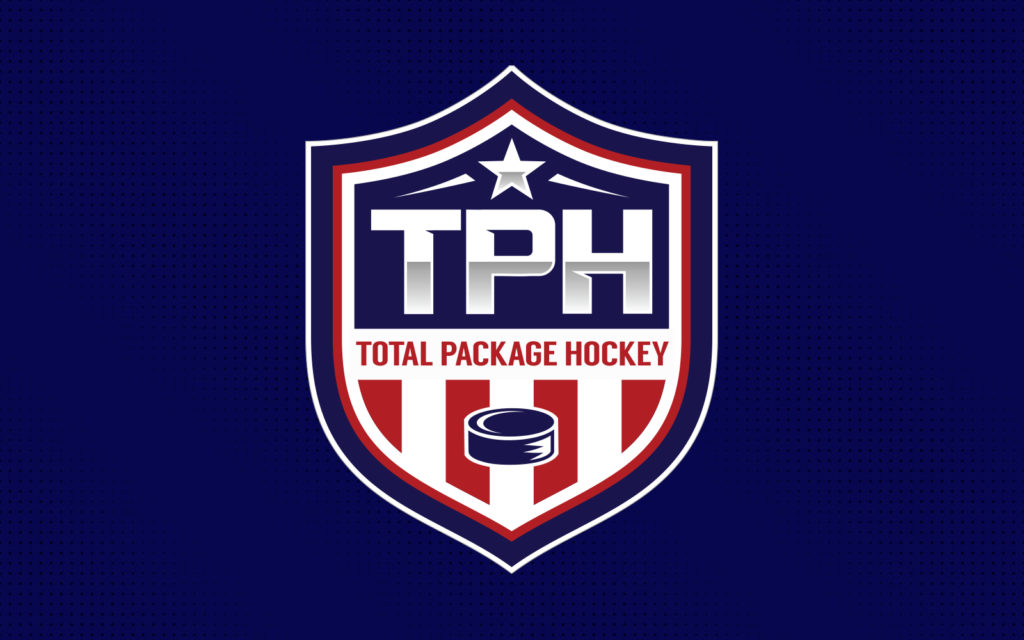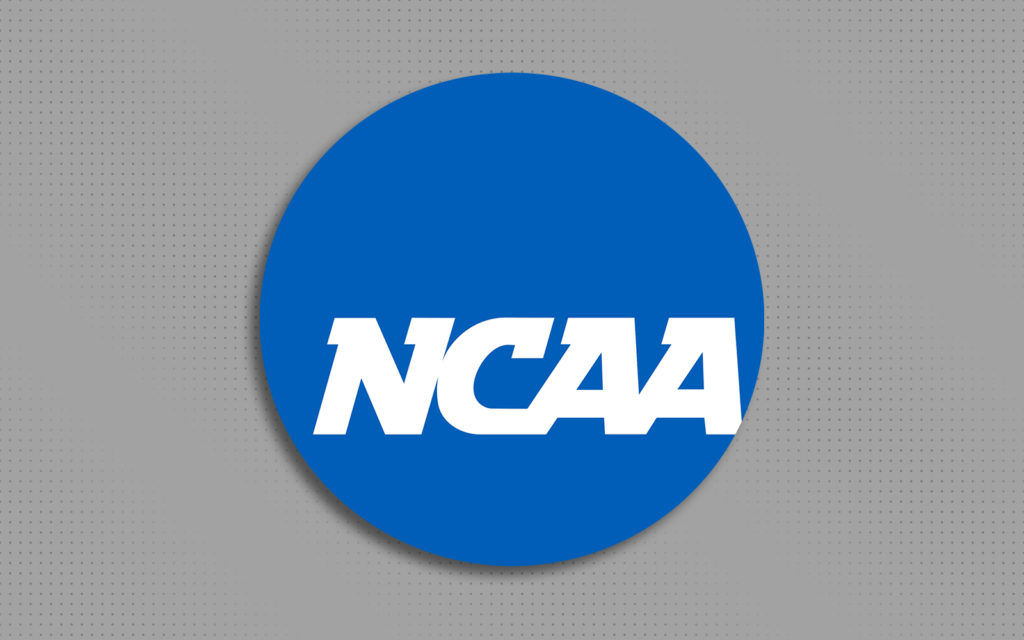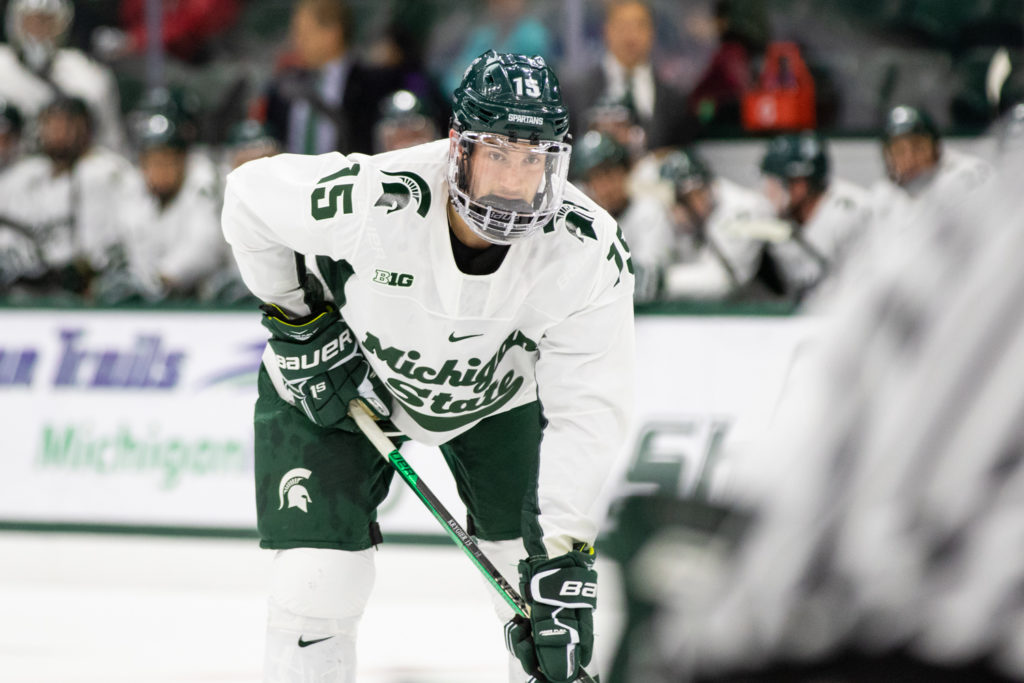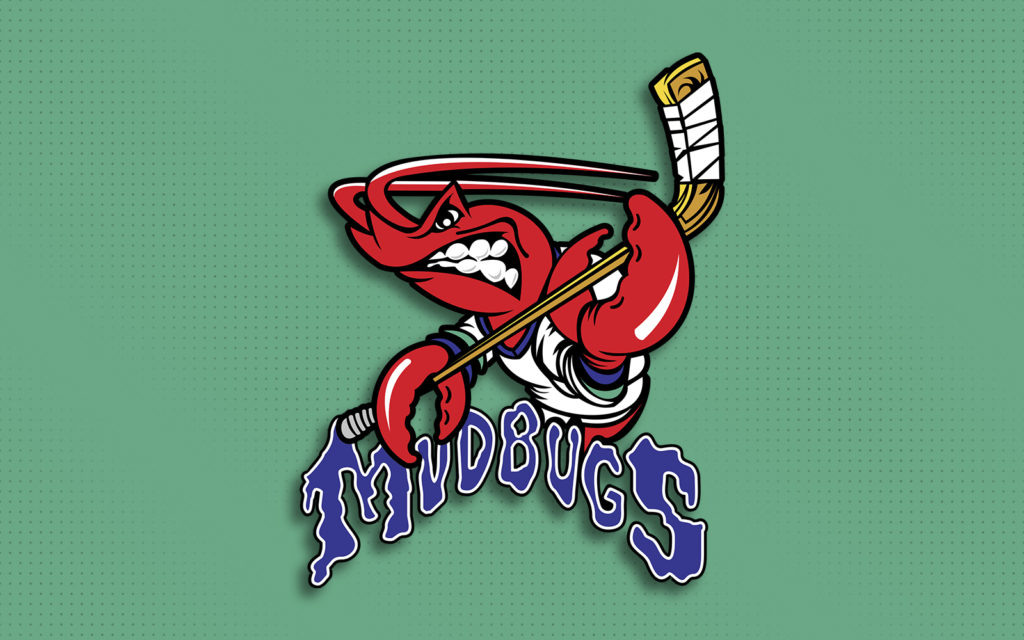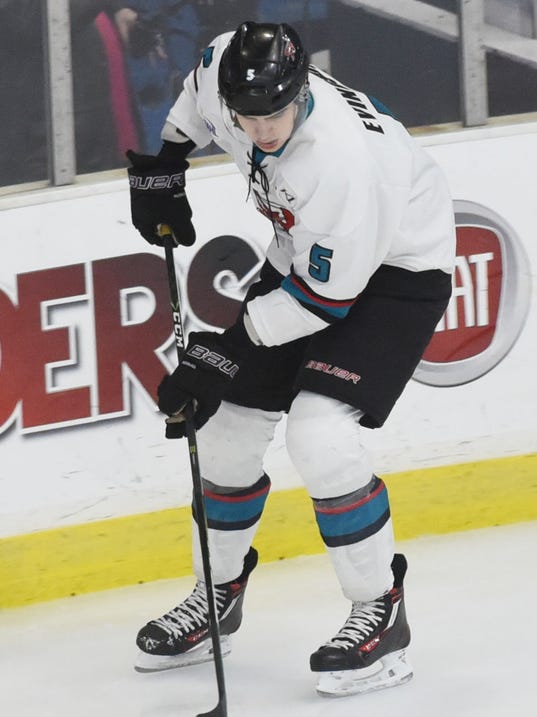Archive for June 2017
30 TPH Detroit-trained Players Claimed by NAHL franchises
Total Package Hockey Detroit is proud to announce that 30 TPH-trained players have been claimed by North American Hockey League franchises, either by signing players to an NAHL tender or by selecting them in the 2017 NAHL Draft on June 6.
Of those 30 players claimed, five tenders and four draft picks were used on TPH Center of Excellence student-athletes. Eight tenders and six draft choices were used on players who took part in the Michigan Hockey Advancement high school program, while the remaining players selected came from TPH’s eight-week summer training program.
“We’re extremely proud of this latest group of players earning spots with NAHL franchises,” said Total Package Hockey Detroit hockey director Brandon Naurato. “They have put in the time and the effort necessary to take another step in their hockey career, and the NAHL provides excellent opportunities for players looking to move through the ranks and progress into college hockey.”
In the last two years, TPH has helped 64 players earn tenders or draft selections by NAHL franchises.
TPH-trained tenders:
Chase Pletzke – Lone Star Brahamas – TPH CoE/Eight-week program/OHL Cup
Cannon Green – Shreveport Mudbugs – CoE/Eight-week program
Jake Transit – Shreveport Mudbugs – CoE/Eight-week program
Max Sasson – Brookings Blizzard – CoE
Valentino Passarelli – Aston Rebels – CoE
Zach Sprys-Tellner – Aberdeen Rebels – MHA/Eight-week program
Jack Clement – Shreveport Mudbugs – MHA/Eight-week program
Connor McGinnis – Shreveport Mudbugs – MHA/Eight-week program
Jason Brancheau – Amarillo Bulls – MHA
Mike McInerney – Amarillo Bulls – MHA/Eight-week program
CJ Regula – Corpus Christi IceRays – MHA
Logan Neaton – Fairbanks Ice Dogs – MHA/Eight-week program
Andrew Kormos – New Jersey Titans – MHA/Eight-week program
TPH-trained draft picks:
Evan Rochowiak – Odessa Jackalopes – MHA/Eight-week program
Hunter Carrick – Johnstown Tomahawks – OHL Cup
Declan Carlile – Fairbanks Ice Dogs – Eight-week program
Drew Cooper – Minnesota Magicians – Eight-week program
Matt Staudacher – Minnesota Magicians – Eight-week program
Christian Stoever – Wilkes-Barre Knights – CoE/Eight-week program
Zach Faremouth – Shreveport Mudbugs – CoE
Austin Roell – Lone Star Brahamas – MHA/Eight-week program
Michael Montambault – Lone Star Brahamas – Eight-week program
Jed Pietila – Aberdeen Wings – MHA
Nick Azarovitz – Johnstown Tomahawks – CoE/Eight-week program
Griffen Sanom – Brookings Blizzard – MHA/Eight-week program
Jack Tucker – Corpus Christi – OHL Cup
Alex Lycett – Kenai River – MHA
Spencer Kimball – Minot Minotauros – MHA/Eight-week program
Matt Stoia – Odessa Jackalopes – Eight Week Program/OHL Cup/CoE
Brighton School District Forges New Partnership with Total Package Hockey
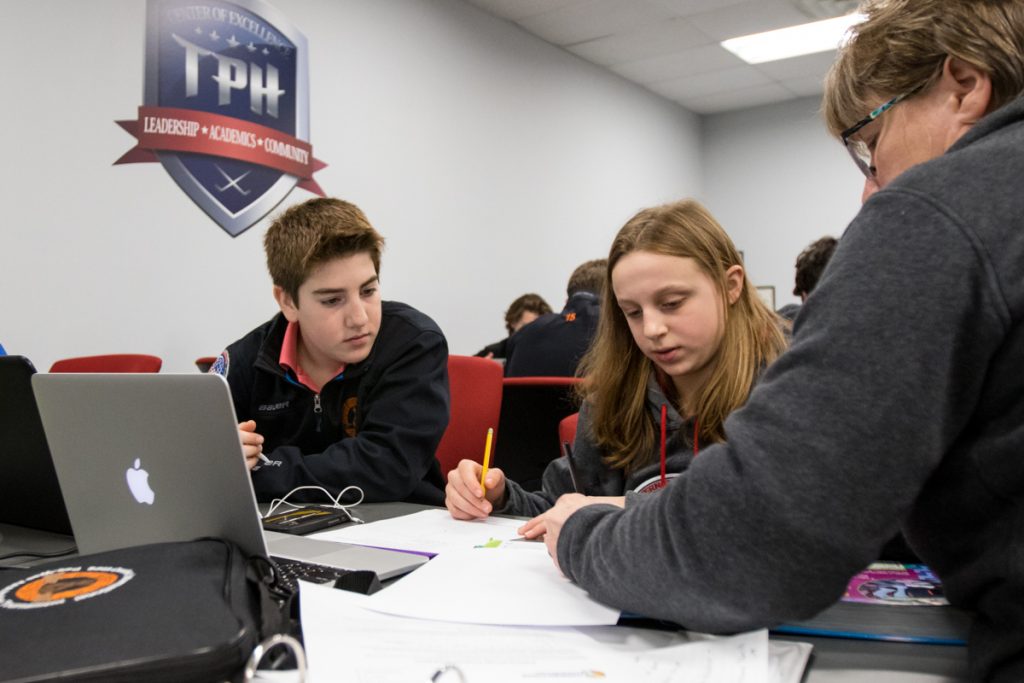
By Michael Caples –
The Brighton School District will have quite a few new hockey players enrolled in the fall of 2017-18.
They won’t mess with the classroom sizes, however.
Brighton has formed a new partnership with Total Package Hockey, bringing all the Center of Excellence students in Canton and Hazel Park under the school district’s tutelage.
The CoE participants will be full-time Brighton students, taking online classes and receiving support from Brighton teachers on-site at the two hockey academy locations.
“We are excited to offer this new educational opportunity to our student-athletes, because of the increased academic support it provides them,” said TPH Detroit director of Hockey Brandon Naurato. “TPH has always emphasized academics as our No. 1 priority and this new relationship is a testament to that commitment.”
The transition will be guided by a former principal with experience creating digital classrooms, as Bill Simms has joined TPH as its new Chief Academic Officer. Simms, who is transitioning to TPH from Lee M. Thurston High School in Redford, is not only an educator, but also a parent of two TPH Canton student-athletes.
“What was really impressive is how committed TPH is to not only bringing a premier, high-quality on-ice and off-ice training program to students, but they really care deeply about the quality of the educational experience and customizing the education for the kids in the classroom setting,” Simms said. “TPH clearly invests a tremendous amount of time and resources into continually improving the student’s academic experience, and I am excited to support a program that is on the cutting edge of changing how athletes learn and train.”
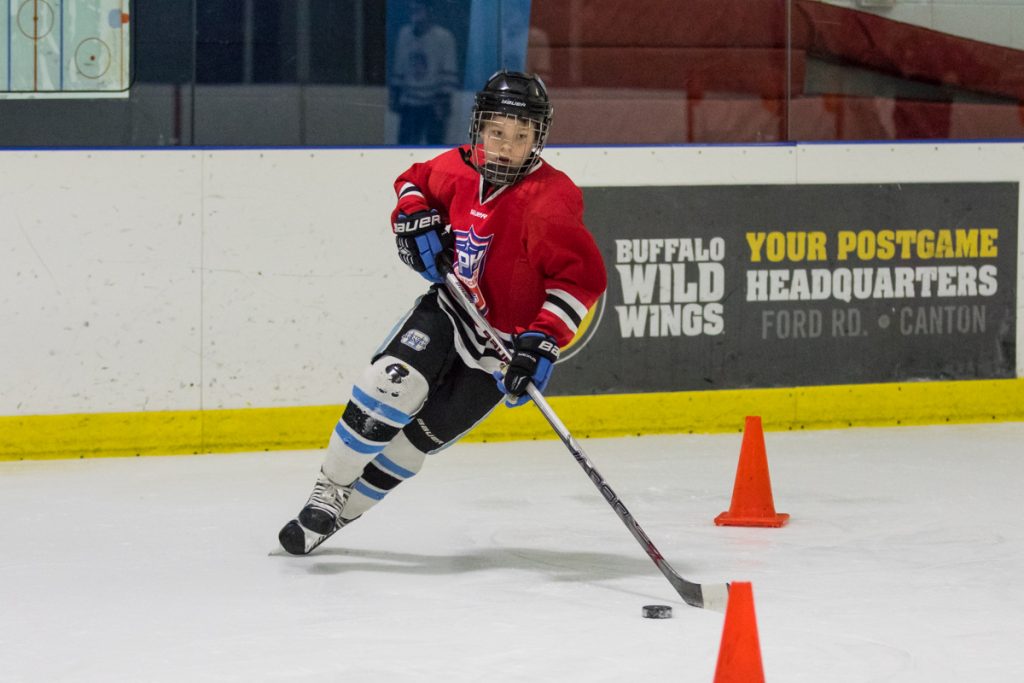
Simms has implemented virtual elements into his current school, and he said he’s excited to work with Brighton in cultivating TPH’s new educational model.
“In my own experience, I helped develop and incorporate alternate learning methods right into the curriculum. I started an online school that’s part of our current school that runs parallel to our school right now, so we actually serve hundreds of students with online courses as well as traditional courses. What I’ve found that works really well in that situation, the very best way to utilize these resources is in what we call a hybrid educational experience for the student. Meaning that you mediate the online course and the online teacher by putting a live teacher who serves more as a coach or a mentor for the students with them. It’s essentially like a tutor for them who is there on-site.
“What we did with TPH is that we were able to develop a partnership with Brighton Schools. The students are now going to be enrolling as full Brighton High School or middle school students, with all the rights and privileges of their program. They will be working with Brighton teachers on-site in the classroom at their TPH locations, and we’ll be utilizing mostly online courses for their classes, so that gives them that flexibility on how they can portably travel with their classes but they work with them during school weekdays. A lot of these days travel, they’re gone four or five days at a time, so it allows them to continue with that work when they’re on the road and to pick up with it or manage the workload. We’re also adding in an elective course that’s on-site with the teacher, essentially like a leadership class, an opportunity to work with an advisor in that capacity, and they earn an elective credit with that. It gives them more of that true hybrid experience.”
As parents with a unique perspective – Simms’ wife is a middle-school teacher in Northville – they have been pleased with the educational experience for both their children. Their son has been enrolled in the program since its inception three years ago, while their daughter joined in the second semester of the 2016-17 year.
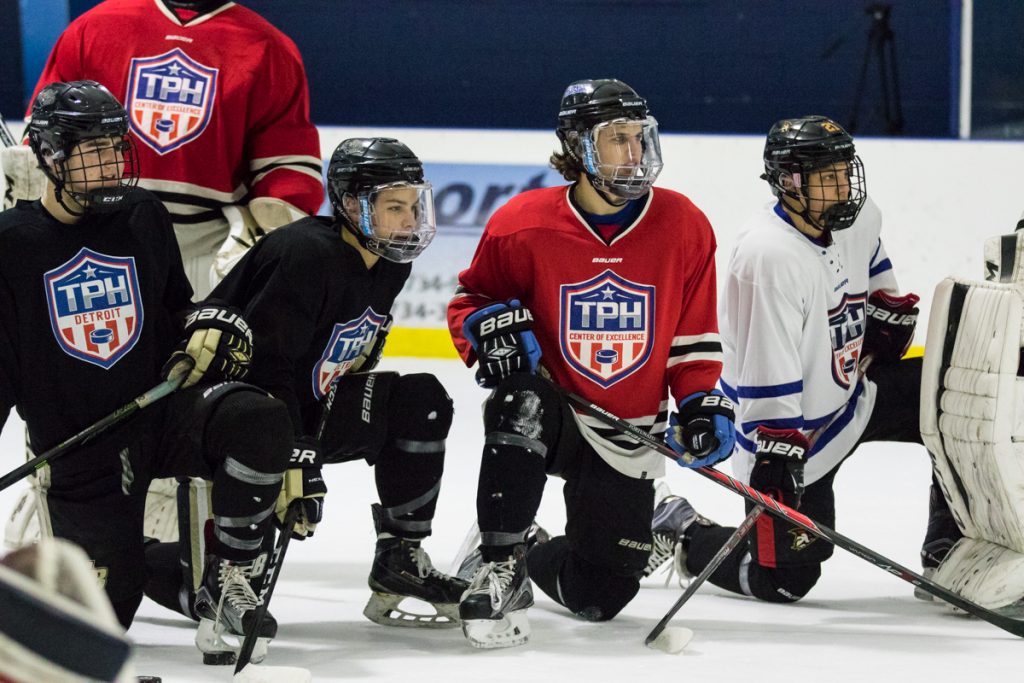
“It’s challenging with the travel. That’s exactly what happened with my daughter this semester, she was in Quebec with her boys’ Compuware AAA team for 10 days, and then the next month she was in Europe for another 10 days, so we realized that we needed to do something. She’s an all-A student, and it was really adding a lot of stress to her and her teachers on how to manage the coursework and the make-up work and staying ahead.
“The transition to the online school was smooth for her, giving her the access to the portable coursework, but what I really liked to accentuate about the experience I’ve seen with my own kids is the idea of personalizing learning in a way that, this is evolving but it’s allowing the student to realize maximize the time that they have on their schoolwork doing the curriculum and the schoolwork. With my son’s case, what I really liked about it is that he was really accountable for all of the curriculum. He had to respond to the questions that his teachers had. It wasn’t like, hey I didn’t get called on in class today, and he was the guy that might sit back and hope he didn’t get called on. Now, all of a sudden, he has to respond.”
About the Total Package Hockey Center of Excellence:
The TPH Center of Excellence is a leading academic and athletic training program for student-athletes in grades 6-12. During the academic year, student-athletes enrolled in the Center of Excellence spend part of their school day in classes provided by an accredited, proven leader in virtual programs. For the other portion of their day, student-athletes train on-ice and off-ice with Total Package Hockey’s world class coaching staff.
Over the past three school years the TPH Center of Excellence has produced the following:
20 NCAA Committed Student-Athletes
29 USHL Draft Picks & Tenders
4 NTDP Rostered Players
9 NTDP Tryout Camp Participants
22 OHL Drafted Players
6 OHL Rostered Players
14 NAHL Draft Picks & Tenders
For more information and how to apply, click here.
Article from: http://mihockeynow.com/2017/06/brighton-school-district-forges-new-partnership-with-total-package-hockey/
NHL, NHLPA Support NCAA Growth
INDUSTRY GROWTH FUND TO FINANCE FEASIBILITY STUDIES FOR POTENTIAL PROGRAMS, STARTING AT U. OF ILLINOIS
The NHL and NHLPA are committed to supporting the growth of NCAA Division I hockey, introducing a new initiative to fund feasibility studies for potential programs on Friday prior to the NHL Draft.
The University of Illinois will be the first school to conduct a feasibility study under the new initiative, which is funded by the NHL and NHLPA’s joint Industry Growth Fund.
Additional schools will have the opportunity to have feasibility studies funded through the project, which is designed to help spur the growth of Division I men’s and women’s hockey.
“Where high-level hockey is established, youth hockey interest and participation often follows,” NHL Commissioner Gary Bettman said. “By expanding the footprint of elite hockey at all levels, we can inspire new players and parents to join the hockey family. By working to add programs at the Division I level, we hope to grow the game of hockey, both on and off the ice.”
GROWING THE GAME
The NHL and hockey participation in general have both expanded significantly throughout the United States in the past 20 years, but the number of Division I programs has not kept pace. | Infographic: The Need for Growth
 Recent additions to the Division I landscape – such as Arizona State and Penn State on the men’s side and Merrimack and Penn State on the women’s side – have been encouraging, and the hope is that funding feasibility studies will allow other schools to see the benefits of adding the sport.
Recent additions to the Division I landscape – such as Arizona State and Penn State on the men’s side and Merrimack and Penn State on the women’s side – have been encouraging, and the hope is that funding feasibility studies will allow other schools to see the benefits of adding the sport.
“While I think everyone in hockey has hoped to see programs added, this is a groundbreaking project by the NHL and NHLPA to take the initiative to help make that happen,” said College Hockey Inc. Executive Director Mike Snee. “Those of us at the college level are grateful for the leadership the NHL and NHLPA are showing with this project.”
There are currently 60 NCAA Division I men’s programs; Holy Cross is poised to become the 37th NCAA Division I women’s program and will join Hockey East in 2018-19.
ABOUT ILLINOIS
Illinois is one of many states that has seen an explosion in hockey interest and participation, fueled in part by the recent success of the Chicago Blackhawks. Illinois produces the most Division I players (84 men and 35 women) of any state that is not home to a Division I program. | Infographic: The New State of Hockey
Illinois athletic director Josh Whittman was in attendance at the announcement and was optimistic that the local talent base could help make the Fighting Illini competitive quickly.
“The idea of varsity hockey at the University of Illinois has great appeal,” said Whittman. “With hockey’s popularity in both Chicago and St. Louis, and rapidly growing youth participation across the state, we anticipate tremendous interest in the sport and at our university. We are grateful to College Hockey Inc., USA Hockey and our colleagues with the Chicago Blackhawks, who have been incredibly supportive during our preliminary due diligence.”
The Blackhawks, who hosted the announcement and this weekend’s NHL Draft, expressed their support of the potential for NCAA Division I hockey in the state.
“We’ve had the opportunity to meet with Josh [Whittman] two or three times and every time you are around Josh you feel that energy that he is going to try to get this done,” said Blackhawks President & CEO John McDonough. “When we heard that the NHL was going to participate, it inspired everybody.”
LONG-TERM BENEFITS
For the NHL and NHLPA, investing in Division I college hockey should produce both immediate and long-term benefits in terms of the health of the sport.
More Division I programs will produce more hockey fans and inspire more young hockey players. They will also provide more opportunities where young players can aspire to play and, in men’s hockey, progress toward the NHL.
NCAA hockey produced a record 314 NHL players in 2016-17, comprising 32% of the league (also a record). The Stanley Cup champion Pittsburgh Penguins featured the most former NCAA players of any team in NHL history.
“The NCAA develops tremendous talent and expanding the number of schools at the Division I level, for us, is a no-brainer,” Bettman said.
The NHL and NHLPA and the league’s teams will encourage additional schools to conduct feasibility studies.
CONTINUING RECENT GROWTH
Buffalo Sabres owener Terry Pegula – whose gift launched the Penn State men’s and women’s programs – and Arizona State men’s head coach Greg Powers both attended the announcement of the new program. After witnessing first-hand the rapid growth their programs have enjoyed, Pegula and Powers are both hopeful that others will join the Division I ranks.
Pegula talked about Nate Jensen, a Penn State alum who scored the first goal at Pegula Ice Arena and now works for Pegula in his oil and gas business.
“I find it interesting that the NCAA hockey road can lead in two places: a hockey career, or a career in business,” Pegula said. “We in the NHL are proud to support NCAA hockey.”
Powers leads the most recent team to join the Division I men’s ranks.
“Seeing first-hand the impact a Division I hockey program has had on a non-traditional market like Arizona, I can only imagine how great of an impact it would have in traditional markets like Illinois,” Powers said. “Hopefully, schools from everywhere will see the positive impact.”
Both Penn State and Arizona State’s new programs began thanks to significant donations. Schools that take advantage of the NHL and NHLPA’s feasibility study project may still need charitable contributions before starting a program, but it’s hoped that they will see the benefits of adding hockey before being presented with a multi-million-dollar gift.
Original Article:
http://collegehockeyinc.com/articles/2017/06/nhl-nhlpa-support-ncaa-growth.php
John Buccigross: Here’s where Cawlidge Hawkey should add Division I teams
The NHL and the NHL Players Association are teaming up to support and promote the growth of Cawlidge Hawkey.
The NHL will announce on Friday — during NHL Draft weekend festivities in Chicago, which also hosted the Frozen Four this past April — that the league will sponsor studies at five U.S. colleges to examine the feasibility of adding a Division I hockey program. The University of Illinois will be the first school to undergo the study.
That doesn’t necessarily mean that Illinois, or any of the other schools involved, will sponsor a Division I hockey program. But the study — conducted by Collegiate Consulting Inc., and paid for the NHL/NHLPA initiative — should give those schools a framework as to what will be needed in order to make the jump, including financial considerations.
There are currently 60 NCAA Division I men’s programs and 35 women’s programs.
Illinois seems like a natural fit to add a program for a number of reasons. The university has an undergraduate student enrollment of approximately 33,000 students and a successful club hockey program. Given the success and significant popularity of the Chicago Blackhawks, who play two hours away up Route 57, it’s not a surprise that Illinois was the sixth-largest state in terms of hockey-playing population in 2014, according to USA Hockey, with nearly 30,000 registered hockey players — a surge of 36.5 percent in just five seasons. But the state has no Division I men’s hockey program.
Illinois is also, of course, part of Big Ten, which became the first Power Five conference to sponsor Division I men’s hockey when Penn State elevated its program in 2012. the Big Ten will include seven teams this fall, now that Notre Dame has joined the league as a sport affiliate member. It is also sanctioning women’s ice hockey, although not as many of the member institutions have women’s teams.
Mike Snee is the executive director of College Hockey, Inc., a nonprofit that serves as a marketing arm for Division I men’s hockey. He and his organization have been the “little engine that could,” trying to promote and grow the sport and serve as a resource for youth hockey players who are considering the college route.
“This is significant news,” said Snee. “The NHL has real pull, and we really appreciate that the NHL looks at college hockey as a key component of the growth of hockey in America — especially in places, like Huntsville, Alabama.” (The University of Alabama in Huntsville has only Division I men’s hockey team in the Southeast.)
Illinois isn’t the only obvious “hole” that those in college hockey would like to fill. Missouri, which has been home to the St. Louis Blues for half a century, has become a hotbed of youth hockey and produced both Division I athletes and NHL players.
Doesn’t Syracuse University, which already has a women’s team and hockey facilities in place, seem like a natural fit for an NCAA men’s hockey team? Folks in Las Vegas are excited about their new Vegas Golden Knights NHL franchise — and that could help spur UNLV to continue pursuing its curiosity in a possible move to a Division I program.
When considering adding an athletic program, changing the level of competition or improving facilities, NCAA schools commission feasibility studies to analyze the costs, benefits, risks and rewards. The sport’s leaders determined that the best way to encourage growth at the NCAA level was to encourage and incentivize new schools to examine the benefits of having a Division I hockey program. These schools can now have their feasibility studies paid for — and also get emotional and passionate backing from the NHL.
The sudden success of Penn State’s program, which vaulted to Division I thanks to the deep pockets of Buffalo Bills and Buffalo Sabres owner Terry Pegula (a Penn State graduate who donated $102 million to build an arena and fund scholarships) and Arizona State’s more measured entry into college hockey, has already led others schools and their alumni to look at the possibility of adding college hockey to their athletic departments.
The hope is that the funding of the feasibility studies by the NHL and NHLPA will lead more schools to take the next step in seriously contemplating adding hockey.
Like who? Here are some viable options:
- Nebraska: Hockey can obviously flourish here. Pittsburgh Penguins rookie Jake Guentzel — who scored a playoffs-best 13 goals on the way to winning the 2017 Stanley Cup — was born in Omaha and played college hockey at the University of Nebraska at Omaha. Lincoln’s Pinnacle Bank Arena, which is already home to Nebraska’s men’s and women’s basketball games, can support an ice sheet. There is even an existing arena where the team could practice. The John Breslow Ice Hockey Center opened in December 2015 and is currently used for youth hockey and Nebraska’s club hockey team.
- Iowa: Like Nebraska, the Hawkeyes are part of the hockey-friendly Big Ten. Plus, more than 30 percent of Iowa’s students come from the Chicago area. Most importantly, a 6,000-seat ice arena is in the works about one mile from campus.
- Penn: The University of Pennsylvania had a Division I hockey team until it folded the program in 1978. The 3,000-seat, on-campus arena where Penn’s team used to play would need a paint job and a good dusting, but it certainly could still host hockey. Penn and Columbia are the only Ivy League schools that don’t have hockey, so they would be a very logical fit for the ECAC Hockey conference, which has 12 member schools for both men’s and women’s hockey, including the six other Ivies. The Ivies do well in hockey, as evidenced by Yale’s national championship in 2013 and Harvard’s in 1989.
- Navy: The Midshipmen have an arena — Annapolis’ Brigade Sports Complex hosts both Navy men’s and women’s club teams — and draw well. And two other service academies, Army and Air Force, have hockey. They don’t have the “expense” of scholarships and Title IX is enforced differently at the service academies.
- Rhode Island: The Rams have an arena, Brad Boss Ice Arena, and compete in the Eastern States Collegiate Hockey League (ESCHL). Every state university in New England has hockey except URI.
- The Pac-12: Getting five Pac-12 schools (six schools are needed to form a conference) to join ASU and create a Pac-12 hockey league would be a dream scenario for college hockey. But each school would need to build facilities, so it would be an expensive undertaking and require aggressive fundraising.
Kevin Westgarth, now the NHL’s vice president of business development and international affairs, played college hockey at Princeton before spending five seasons and 169 games with the Los Angeles Kings, Carolina Hurricanes, and Calgary Flames. He is charged with helping grow hockey participation and passion, both domestically and abroad.
“The college hockey experience is also valuable in its ability to help positively shape men and women,” Westgarth said. “College hockey is a great opportunity for players to develop their game and themselves, all while getting an education. Having the University of Illinois as the first to partake in the project, and explore the potential of establishing a D-I hockey program, is exciting and encouraging. We look to build momentum and get more schools excited about the prospect of adding hockey.”
Hockey is still a young sport in the U.S. There were just four NHL teams based in the U.S. during the 1966-67 season. When Las Vegas begins play this fall, it will become the 24th U.S. team — and another foray into an “nontraditional” hockey market. To some, hockey is great enough of a sport to be successful and popular anywhere.
“When high-level hockey teams are established, it often ignites youth hockey in the surrounding area and inspires young people to get involved,” says Westgarth. “One of the best recent examples is what occurred in the wake of Alabama-Huntsville getting a D-I team. Youth hockey in the area exploded, and we saw a Huntsville native, Nic Dowd, in the NHL this past season.”
Original Article:
http://www.espn.com/nhl/story/_/id/19715829/nhl-john-buccigross-where-cawlidge-hockey-add-teams
Winnipeg nabs Mudbugs defenseman in NHL draft
Croix Evingson made Mudbugs history Saturday.
In the seventh round of the NHL Draft, the Winnipeg Jets selected the Shreveport Mudbugs defenseman with the 211th overall selection.
Shreveport Mudbugs defenseman Croix Evingson was drafted by the Winnipeg Jets.(Photo: Henrietta Wildsmith/The Times)
The 6-foot-5, 209-pound Alaska native captured Defenseman of the Year honors in the North American Hockey League for the 2016-17 season. He led all blue-liners with 52 points (12 goals, 40 assists).
Evingson is committed to play college hockey at the University of Massachusetts-Lowell.
The Mudbugs recently completed their first season in the NAHL, a Tier-II junior league. Evingson is the player in the history of the franchise to be drafted after playing in Shreveport.
Twitter: @RoyLangIII
Original Article:

